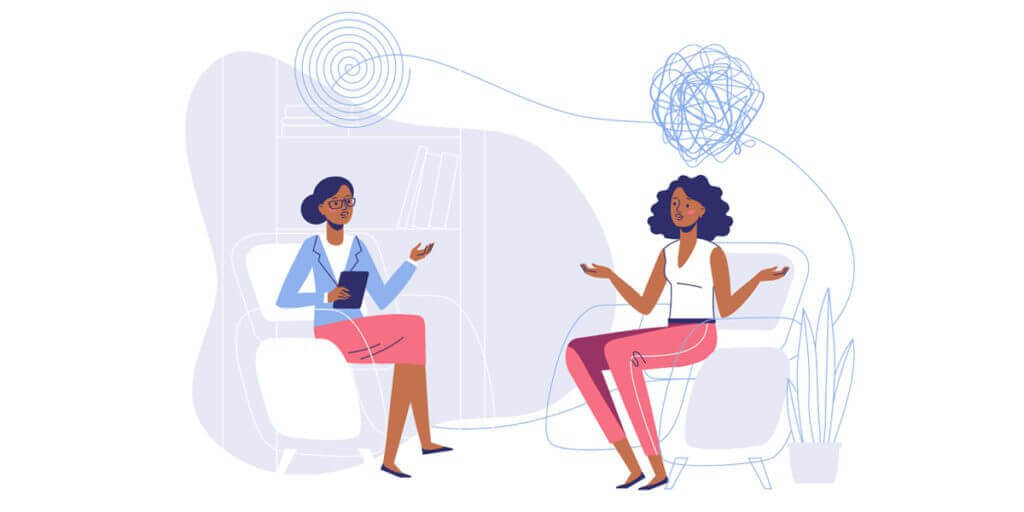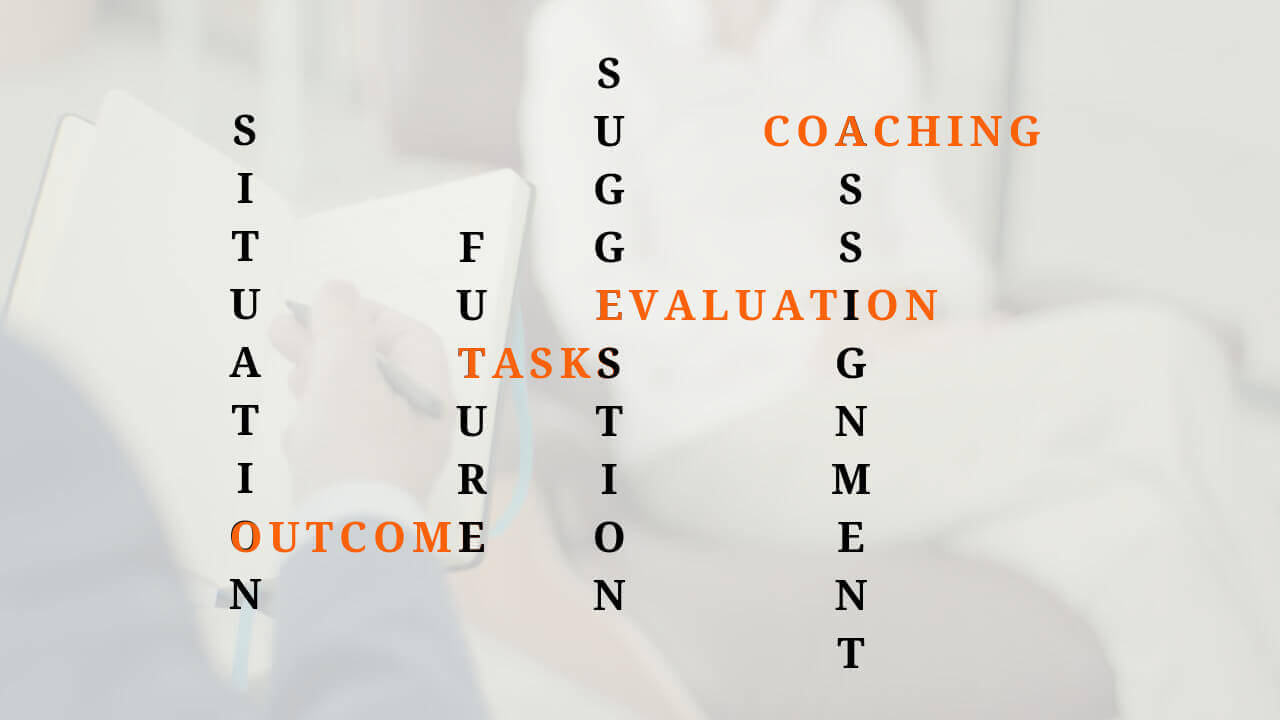SOFT SEA or the SO FACE THE SEA Coaching model is probably the most powerful and comprehensive coaching framework that is structured yet flexible, which ensures that you and the client walk together on a path that is in sync with their desired outcome.
The best way to understand this model is to understand the reasons behind why seek coaching or therapy.
Why do people seek a life coach or a therapist?
Most clients when they visit for a session are let’s say in a situation “A” (Current Situation) and they would like to change or improve that situation to “B” (Desired Situation).
Once we understand this, it becomes obvious that the first step in coaching and therapy is to help the client define their current situation and their desired outcome.
Once the client is able to define the two, it becomes clear that the client needs to take some steps or do some tasks to move from the current situation to the desired outcome. So we help the client identify and list all those tasks that need to be completed for them to move from the current situation to the desired outcome.
Till here the model seems to be very similar to the GROW Coaching Model. Doesn’t it?
What makes SOFT SEA Coaching model so powerful?
The real magic and power of the SOFT SEA Coaching model starts from the next step.
Once we know the tasks you will notice that these tasks can be broadly divided into two parts. Tasks that the client is already doing and the tasks that the client is not able to do. The tasks that the client is already doing well, we don’t really need to fidget with. So we are left with the tasks that the client is not able to do.
Now if the client knows the task, what will stop the client from doing it?
Look back into your own life. Have you ever been in a situation where you knew, what to do and yet you were not able to do it? What were your reasons for not being able to do it?
Broadly speaking, we can divide these reasons into three categories:
- Lack of skills
- Lack of resources
- Dis-empowering mental states i.e. a dysfunctional thought or dysfunctional emotion.
The first two i.e. the lack of skills and the lack of resources will take us back to new tasks. In the long run, we can develop skills and we can also arrange resources, this may not happen immediately but can be done.
Developing skills and arranging for resources requires the client to be involved in new tasks which requires an additional level of motivation. So even before we come to the tasks we, first make the outcome more motivating.
Helping the client explore the benefits of reaching the desired outcome can be extremely useful for this purpose. One of the best ways to do so is to ask the client to describe how would the future be once they have achieved the outcome.
To make the future inspiring and engaging describing it in sensory details. i.e. what will the client see, hear and feel after achieving the outcome?
The sensory details could also include the ways the client observes himself or herself act and behave in this future, the capabilities and skills they have developed and the emotions they are going to experience as a result of these changes.
Once the level of motivation is high and we know the tasks that need to be done, we are back to two types of tasks, one that a client can do and one that the client can’t do because of a certain negative mental state. In the SOFT SEA Coaching model, we call these negative mental states “Hindrances”.
Lack of motivation is an example of such hindrance which we have consciously tried to address by helping the client become conscious of the benefits of achieving the outcome.
Many times, this conscious motivation is not enough as a hindrance may be rooted in the unconscious. So what we would ideally like to do, not just at the conscious but also unconscious level, is to disconnect the task from the hindrance and connect that to an appropriate replacement feeling.
To understand this better, take the example of a task “to get up in the morning and go for exercise”. The hindrance is a feeling of lethargy and laziness when the alarm rings. The appropriate replacement feeling could be feeling fresh, energetic and a sense of excitement.
Now imagine if we were able to disconnect getting up and exercising from this feeling of laziness and connect it to feeling energetic. So when the alarm rings the natural feeling that the client gets is that of energy and excitement instead of laziness. That would help, wouldn’t it?

What is important to remember is that at times this can be done simply by creating unconscious motivation towards achieving the outcome. This is one of the things that you will learn to do with hypnosis in the basic practitioner course. That said in some cases it may require more work than just increasing unconscious motivation. To understand what else may be required, we need to dig a bit deeper and explore the source of these hindrances.
Apart from lack of motivation, other sources of hindrance can be a habit or a strong association or a belief that our mind has formed. At times these habits and associations may be a result of a strong positive intention or a secondary gain. In some cases, the hindrances may be driven by some irrational thoughts or stories that are playing in our minds on an automatic basis. Finally, the belief itself could be a result of a trauma or a series of past experiences that have accumulated over the years.
As a part of the complete course, you would learn to work with each of these sources effectively. As I said earlier, in the basic practitioner course you will learn to work with unconscious motivations and also habits and associations to an extent.
In the practitioner course, you will learn to work with habits and associations more extensively. Advanced practitioner course in coaching will focus on working with beliefs and secondary gain. Finally, the last two levels that are the psychotherapy program will focus on helping you develop skills to work with intense negative emotions, traumas and deep-rooted past experiences.
Irrespective of what level of the course you have completed, you learn to help the client summarise and evaluate the work you are doing with them effectively. There is also a lot of emphasis on assignments and homework that the client needs to do between sessions. These assignments ensure that the client is continuing to work towards the desired outcome as well and is not becoming dependent on the sessions for the same.
What does SOFT SEA stand for?
In short, our entire approach can be summarised using the acronym “SO Face The SEA™” also known as “SOFT SEA™“.
Where,
S Stands for Current Situation
O stands for Desired Outcome
F for Future which includes Actions, Capabilities and Emotions which are represented by A, C and E respectively.
T stands for Tasks and includes sub-points Hindrance and Replacement Emotion which are represented by H and E respectively.
Finally, we have the SEA, where each letter stands for Summary, Evaluation and Assignment respectively.
We, at ICHARS, created SOFT SEA™ as a model, to help our participants understand the key areas that they need to address while working with clients.
Most of the participants have come back to tell us that the model is extremely simple yet very powerful and comprehensive in terms of its effectiveness.
Where can I learn more about SOFT SEA Coaching Model?
If you have studied psychology, you may already have realised how this model is eclectic as it includes principles from all the three primary approaches to psychology i.e. cognitive, behavioural and psychoanalysis.
As a part of the complete Cognitive Hypnotic Coaching™ and Cognitive Hypnotic Psychotherapy™ course you are learning to work with automatic thoughts and beliefs, conditioned behaviours, past experiences and actually a lot more.

